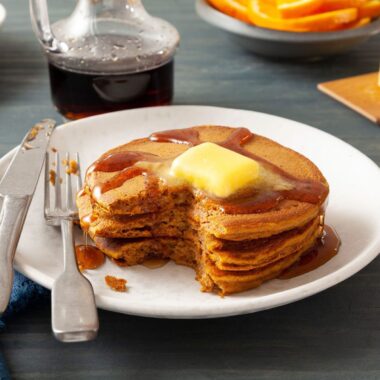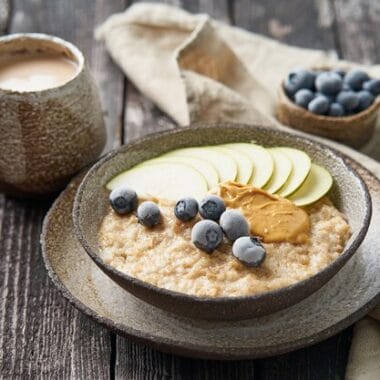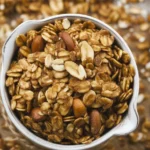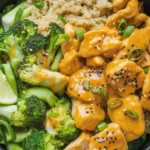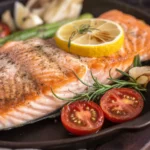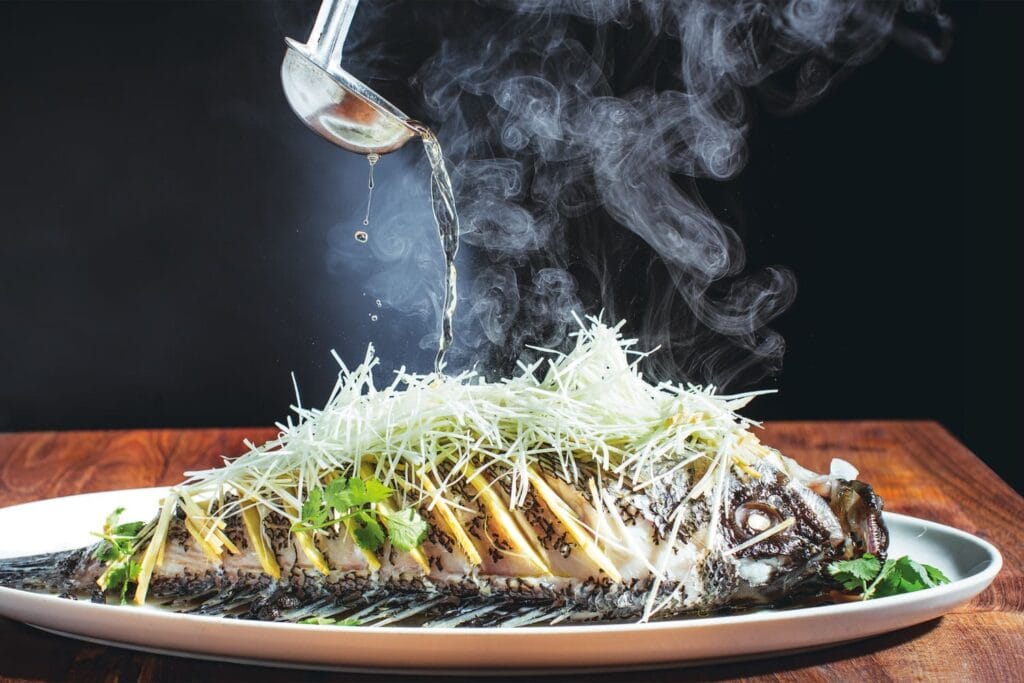
Imagine a vibrant dinner party where the table is adorned with colorful, bite-sized delights that awaken your senses with every bite. The air is filled with the tantalizing aroma of lemongrass, the crisp crunch of fresh herbs, and the zesty kick of citrus. Asian appetizers have a magical way of bringing people together, offering a burst of flavors that tell stories of culture, tradition, and innovation. From the delicate translucence of Vietnamese rice paper rolls to the spicy tang of Peruvian ceviche tostadas with an Asian twist, these starters are more than just food—they’re an invitation to explore a world of taste. In this blog post, we’ll dive deep into the art of Asian appetizers, spotlighting four crowd-pleasers: Vietnamese rice paper rolls, lemongrass chicken lettuce cups, fava bean falafel, and Peruvian ceviche tostada. Get ready for a flavorful journey packed with recipes, tips, and cultural insights to elevate your next gathering.
Read Also:
- Lentil Coconut Curry – A Creamy and Flavorful Delight by Chef Bin Jaoe
- Stuffed Bell Peppers That Will Blow Your Taste Buds Away – Chef Bin Jaoe’s Flavor-Packed Recipe
- Buffalo Cauliflower Tacos That Bring the Heat – A Chef Bin Jaoe Favorite
- No-Bake Cheesecake Jars – A Simple, Creamy Delight
Why Asian Appetizers Steal the Show
Asian appetizers are the ultimate crowd-pleasers because they balance bold flavors with fresh ingredients, creating dishes that are both indulgent and light. Rooted in centuries-old culinary traditions, these starters reflect the diversity of Asia’s food culture, from Vietnam’s herb-heavy dishes to the fusion-inspired creations that blend East with West. They’re perfect for any occasion—whether you’re hosting a casual get-together or a sophisticated soirée. The focus keywords we’ll explore—Vietnamese rice paper rolls, lemongrass chicken lettuce cups, fava bean falafel, and Peruvian ceviche tostada—showcase this diversity, offering a mix of traditional and modern twists that appeal to foodies everywhere. Let’s break down each dish, exploring their origins, preparation techniques, and tips to make them shine.
Vietnamese Rice Paper Rolls: Fresh, Vibrant, and Versatile
Picture this: It’s a warm summer evening, and I’m sitting on my porch with friends, dipping translucent Vietnamese rice paper rolls into a creamy peanut sauce. The rolls are stuffed with crisp veggies, tender shrimp, and fragrant herbs, offering a refreshing crunch that feels like a hug from Southeast Asia. Known as gỏi cuốn in Vietnam, these fresh spring rolls are a staple in Vietnamese cuisine, celebrated for their balance of flavors and textures. According to Hungry Huy, a blog dedicated to Vietnamese recipes, these rolls embody the principle of balance, incorporating the five fundamental tastes: sour, bitter, sweet, spicy, and salty.
What Makes Rice Paper Rolls Special?
Vietnamese rice paper rolls are wrapped in delicate rice paper, which becomes soft and pliable when soaked in water. The filling typically includes rice vermicelli, shrimp or pork, lettuce, cucumber, carrots, and fresh herbs like mint, cilantro, and Thai basil. The magic lies in the dipping sauce—often a peanut-hoisin blend or a tangy nước chấm (fish sauce-based dip). These rolls are not only delicious but also healthy, gluten-free, and customizable for vegetarian or vegan diets.
How to Make Perfect Rice Paper Rolls
Making rice paper rolls at home is easier than you think, but it takes a bit of practice to get the rolling technique right. Here’s a step-by-step guide:
- Soak the Rice Paper: Dip a sheet of rice paper in warm water for 5–10 seconds until it softens. Don’t oversoak, or it’ll tear.
- Layer the Fillings: Place a small handful of vermicelli, protein (shrimp, pork, or tofu), and veggies on the lower third of the rice paper. Add herbs for aroma.
- Roll Tightly: Fold the bottom over the filling, tuck in the sides, and roll tightly to seal. Think of it like wrapping a tiny burrito.
- Serve with Dipping Sauce: Whip up a quick peanut sauce with hoisin, peanut butter, garlic, and a splash of water, or try a classic nước chấm with fish sauce, lime juice, sugar, garlic, and chili.
Pro Tip: Keep a damp towel over your rolled spring rolls to prevent them from drying out before serving. For inspiration, check out i am a food blog for a detailed guide on making authentic Vietnamese spring rolls.
Cultural Significance
In Vietnam, rice paper rolls are often served during family gatherings and celebrations, symbolizing freshness and harmony. The use of fresh herbs reflects the Vietnamese emphasis on health and balance, as noted in Around the World in 80 Cuisines, which highlights the influence of the five fundamental tastes in Vietnamese cooking.
Lemongrass Chicken Lettuce Cups: A Burst of Southeast Asian Flavor
I’ll never forget the first time I tried lemongrass chicken lettuce cups at a Thai restaurant. The tender, fragrant chicken nestled in crisp lettuce leaves, kissed with the citrusy zing of lemongrass, was a revelation. These cups are a perfect example of how Southeast Asian cuisine transforms simple ingredients into something extraordinary. The Woks of Life describes similar dishes as a celebration of bold, fresh flavors, often with a modern twist.
The Allure of Lemongrass
Lemongrass is the star of this dish, lending a bright, aromatic note that pairs beautifully with savory chicken. Native to Southeast Asia, this herb is a staple in Thai, Vietnamese, and Malaysian cooking. The chicken is typically marinated with lemongrass, garlic, fish sauce, and a touch of sugar, then stir-fried or grilled to perfection. Served in lettuce cups, it’s a low-carb, interactive appetizer that invites guests to assemble their own bites.
Recipe for Lemongrass Chicken Lettuce Cups
Here’s how to make this crowd-pleaser at home:
- Marinate the Chicken: Combine 1 lb of ground chicken with 2 tbsp minced lemongrass, 2 cloves minced garlic, 1 tbsp fish sauce, 1 tsp sugar, and a pinch of chili flakes. Let it sit for 30 minutes.
- Cook the Chicken: Stir-fry the mixture in a hot skillet with 1 tbsp oil until cooked through, about 5–7 minutes.
- Prepare the Lettuce: Use crisp lettuce leaves like butter or romaine, washed and patted dry.
- Assemble and Serve: Spoon the chicken into lettuce cups, top with chopped peanuts, cilantro, and a squeeze of lime. Serve with a side of sweet chili sauce for dipping.
Pro Tip: For extra crunch, add shredded carrots or water chestnuts to the chicken mixture. Thai Food Online offers great insights into using lemongrass in Southeast Asian recipes.
Why They’re a Hit
Lettuce cups are interactive and fun, making them perfect for parties. They’re also versatile—swap chicken for pork, tofu, or shrimp to suit different tastes. The combination of warm, savory filling and cool, crisp lettuce creates a delightful contrast that keeps guests coming back for more.
Fava Bean Falafel: A Middle Eastern Twist with an Asian Flair
Falafel is a Middle Eastern classic, but fava bean falafel brings a unique twist that aligns beautifully with Asian-inspired flavors. I first encountered fava bean falafel at a food market, where the vendor paired it with a sesame-soy dipping sauce that blew my mind. Traditionally made with chickpeas, falafel can be crafted with fava beans for a creamier texture and nuttier flavor, as noted by Vermilion Roots, which explores Southeast Asian-inspired vegetarian dishes.
The Fava Bean Difference
Fava beans, common in Middle Eastern and Asian cuisines, add a rich, earthy flavor to falafel. They’re blended with herbs like parsley and cilantro, spices like cumin and coriander, and a touch of garlic, then fried to golden perfection. For an Asian twist, you can incorporate ingredients like sesame seeds or a dash of soy sauce into the mix.
How to Make Fava Bean Falafel
Here’s a simple recipe to try:
- Blend the Mixture: In a food processor, combine 2 cups shelled fava beans (fresh or canned), 1 cup parsley, 1 cup cilantro, 1 small onion, 2 cloves garlic, 1 tsp cumin, 1 tsp coriander, and a pinch of salt. Pulse until coarse.
- Form Patties: Shape the mixture into small balls or patties. If it’s too wet, add a tablespoon of chickpea flour.
- Fry or Bake: Fry in hot oil for 2–3 minutes per side until golden, or bake at 400°F for 20 minutes, flipping halfway.
- Serve: Pair with a tahini-soy dipping sauce (mix tahini, soy sauce, lemon juice, and water) and a side of pickled radish for an Asian flair.
Pro Tip: Fresh fava beans yield the best flavor, but canned ones work in a pinch. Soak canned beans in water to reduce saltiness. Simply Recipes offers excellent tips on working with fava beans.
Cultural Fusion
Fava bean falafel bridges Middle Eastern and Asian cuisines, reflecting the global fusion trend. By incorporating Asian ingredients like soy or hoisin, you create a dish that’s both familiar and excitingly new, perfect for adventurous eaters.
Peruvian Ceviche Tostada: A Fusion of Cultures
I was skeptical the first time I saw Peruvian ceviche tostada on a menu at a fusion restaurant. Ceviche, a South American dish, paired with a crispy tostada and Asian-inspired flavors? It sounded like a culinary gamble, but one bite of the tangy, spicy fish atop a crunchy tortilla changed my mind. Natasha’s Kitchen highlights ceviche’s versatility, noting its adaptability to various presentations, like tostadas.
The Fusion Factor
Peruvian ceviche traditionally features fresh fish “cooked” in lime juice, mixed with red onion, cilantro, and aji peppers. For an Asian twist, you can add ingredients like ginger, soy sauce, or sesame oil. Serving it on a tostada—a fried corn tortilla—adds crunch and makes it an ideal appetizer. This fusion reflects the growing trend of blending Latin American and Asian cuisines, creating bold, unexpected flavors.
Recipe for Peruvian Ceviche Tostada
Here’s how to make it:
- Prepare the Ceviche: Dice 1 lb of fresh white fish (like sea bass or snapper) and marinate in ½ cup lime juice for 15–20 minutes. Add 1 tbsp minced ginger, 1 tbsp soy sauce, ¼ cup diced red onion, 1 tbsp chopped cilantro, and 1 minced aji or jalapeño pepper.
- Make the Tostadas: Fry small corn tortillas in oil until crispy, or bake at 375°F for 10 minutes.
- Assemble: Spread a thin layer of mashed avocado on each tostada, then spoon the ceviche on top. Garnish with sesame seeds and microgreens.
- Serve: Offer extra lime wedges and a side of chili-soy dipping sauce.
Pro Tip: Use the freshest fish possible, and keep it chilled until serving. Just One Cookbook provides great tips on handling raw fish safely.
Why It Works
The ceviche tostada combines the bright, acidic notes of ceviche with the satisfying crunch of a tostada, making it a showstopper at any gathering. The Asian-inspired additions like ginger and soy add depth, creating a dish that’s both refreshing and indulgent.
Comparison Table: Asian Appetizers at a Glance
| Appetizer | Key Ingredients | Preparation Time | Flavor Profile | Dietary Notes |
|---|---|---|---|---|
| Vietnamese Rice Paper Rolls | Rice paper, shrimp, vermicelli, herbs, veggies | 20–30 minutes | Fresh, light, savory-sweet | Gluten-free, vegan option |
| Lemongrass Chicken Lettuce Cups | Chicken, lemongrass, lettuce, peanuts | 30–40 minutes | Aromatic, savory, citrusy | Low-carb, gluten-free option |
| Fava Bean Falafel | Fava beans, parsley, cumin, tahini | 30–45 minutes | Earthy, nutty, savory | Vegan, gluten-free |
| Peruvian Ceviche Tostada | Fish, lime juice, tostada, ginger, soy | 25–35 minutes | Tangy, spicy, crunchy | Gluten-free option |
This table highlights the unique qualities of each appetizer, helping you choose the perfect one for your next event. Whether you’re catering to dietary restrictions or craving a specific flavor, there’s something here for everyone.
Tips for Hosting with Asian Appetizers
Hosting a party with Asian appetizers is a surefire way to impress your guests. Here are some actionable tips to make your spread unforgettable:
- Mix and Match: Offer a variety of textures and flavors—pair the crunch of rice paper rolls with the softness of lettuce cups.
- Prep Ahead: Make rice paper rolls and ceviche a few hours in advance and store them in the fridge. Fry falafel just before serving for maximum crispness.
- Presentation Matters: Use colorful plates and garnish with herbs, sesame seeds, or edible flowers for a wow factor. Bon Appétit has great ideas for food styling.
- Cater to Diets: Label dishes for vegan, gluten-free, or low-carb options to accommodate all guests.
- Interactive Fun: Set up a DIY station for lettuce cups or rice paper rolls, letting guests customize their bites.
The Cultural Tapestry of Asian Appetizers
Asian appetizers are more than just food—they’re a reflection of culture and history. Vietnamese rice paper rolls, for instance, embody the Vietnamese philosophy of balance, as noted in Viet World Kitchen. Lemongrass chicken lettuce cups draw from Thai and Vietnamese street food traditions, where fresh herbs and bold marinades reign supreme. Fava bean falafel connects Middle Eastern and Asian cuisines, showcasing the global exchange of ingredients. Meanwhile, Peruvian ceviche tostadas with Asian influences highlight the modern trend of culinary fusion, blending South American and Asian flavors in a way that’s both innovative and respectful of tradition.
FAQ: Your Burning Questions About Asian Appetizers
Q: Can I make Vietnamese rice paper rolls ahead of time?
A: Yes, you can prepare them a few hours in advance. Wrap them tightly in plastic wrap and store in the fridge to keep them fresh. Avoid making them more than a day ahead, as the rice paper can dry out.
Q: What’s a good substitute for lemongrass in chicken lettuce cups?
A: If you can’t find lemongrass, try using lemon zest combined with a bit of fresh ginger for a similar citrusy, aromatic kick.
Q: Are fava bean falafels healthier than chickpea falafels?
A: Both are nutritious, but fava beans have slightly more protein and fiber. They’re also naturally gluten-free, making them a great option for dietary restrictions.
Q: Is the fish in Peruvian ceviche tostada safe to eat?
A: Yes, if you use fresh, high-quality fish and marinate it properly in lime juice. For extra safety, you can use pre-cooked shrimp, as suggested by Natasha’s Kitchen.
Q: How can I make these appetizers vegan?
A: For rice paper rolls, use tofu or mushrooms instead of shrimp. Swap chicken in lettuce cups for jackfruit or tempeh. Fava bean falafel is already vegan, and for ceviche tostadas, try hearts of palm or artichoke hearts as a fish substitute.
Conclusion: A World of Flavor at Your Fingertips
Asian appetizers like Vietnamese rice paper rolls, lemongrass chicken lettuce cups, fava bean falafel, and Peruvian ceviche tostada are more than just starters—they’re a celebration of flavor, culture, and creativity. Each dish tells a story, from the herb-laden freshness of Vietnam to the bold fusion of Peruvian and Asian cuisines. Whether you’re hosting a dinner party or simply craving something new, these recipes offer endless possibilities to delight your taste buds and impress your guests.
As you embark on your culinary adventure, don’t be afraid to experiment. Add your own twist to these dishes—maybe a dash of chili oil in your falafel or a sprinkle of furikake on your ceviche tostada. The beauty of Asian appetizers lies in their versatility and ability to bring people together. So, grab your ingredients, roll up your sleeves, and start creating. For more inspiration, explore blogs like RecipeTin Eats for additional Asian-inspired recipes, or dive into Masterblogging for tips on sharing your culinary creations online.
What’s your favorite Asian appetizer to make or eat? Share your thoughts in the comments, and let’s keep the conversation sizzling!
